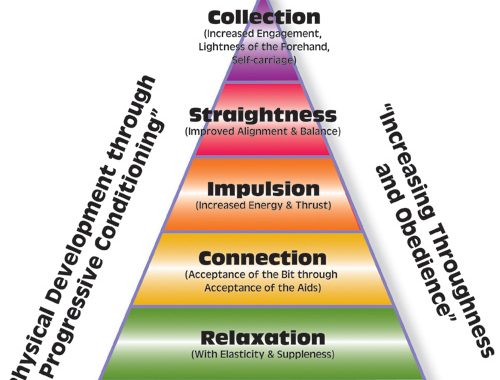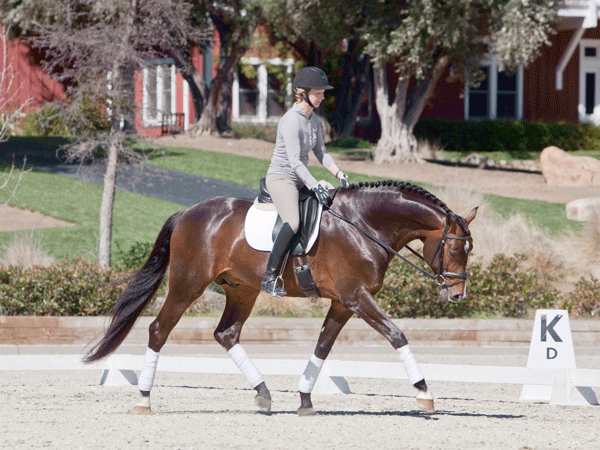Stretch Down Circle
The Stretch Down Circle Defined
Also referred to as “long and low.” The stretch down circle is a gradual lengthening of the reins, as far as the horse is willing and prepared to stretch, while maintaining contact, balance and rhythm.
How to Execute the Stretch Down Circle
Start in working trot – sitting or rising
Move the horse onto the 20-meter circle
Half halt and move into a more collected trot
Transition to back the working trot
Repeat transitions between collected trot and working trot until the horse feels relaxed and “on the aids”
Once the horse is “on the aids,” transition into the working trot and gradually allow your hands to move forward and downward while also allowing the reins to slip through your fingers.
To complete this exercise either:
a) close the fingers and shorten the reins – or –
b) allow the horse to go onto the loose rein
Notes:
If you are performing in the rising trot, take a two-point like position and post lightly on the horses back. This encourages the horse to remain relaxed through the back.
This exercise can be performed in any gait.
The hands should move forward slightly, but contact should always remain.
Taking the reins forward frequently is more effective in achieving the desired result than leaving the horse “strung out” for too long.
The horse’s mouth should not drop below his elbow and the nose should remain on the vertical or slightly in front of the vertical.
Previous training is most likely correct if the horse maintains his rhythm, chews the bit softly and stretches forward and down obediently during this exercise. Good for you!!!
Purpose of the Stretch Down Circle
To develop the horse’s confidence in accepting the bit and the rider’s hands.
To develop balance.
To allow the horse to relax the back and neck after exertion.
To test self carriage.
To test the correctness of previous training with regard to rhythm, looseness and contact.
Common Errors in Execution
The horse loses rhythm.
The horse snatches the reins from the rider’s hand due to tension in the neck and back.
The horse falls on the forehand and becomes unbalanced because he is lacking the musculature.
The rider does not increase his driving aids resulting in the horse loosing activeness behind.
The rider allows the reins to loop, thus losing contact.
Author: Dressage Academy
Shoulder Fore
Travers
You May Also Like

Rhythm – Let’s Get into the Groove Newsletter
March 28, 2018
The Not-So-Secret, Secret Dressage Training Formula Article
December 31, 2017
One Comment
Pingback: